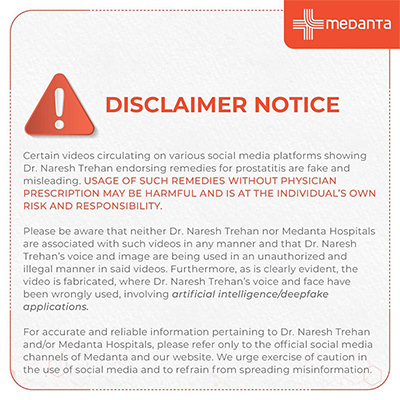Brain Tumour Diagnosis: MRI, Biopsy, & Other Critical Tests

TABLE OF CONTENTS
Brain tumor diagnosis poses a major medical challenge today. Only one-third of brain tumors turn out to be cancerous. Non-cancerous tumors can still affect brain function when they grow large enough to put pressure against nearby tissues thus causing symptoms.
The diagnostic process starts when doctors perform a complete neurological examination and order advanced imaging tests. MRI technology (including contrast, spectroscopy etc) leads the way in brain tumor detection, and contrast agents make the images clearer and define a pattern for that lesion. Medical teams also rely on CT scans, PET-CT scans, and biopsies to diagnose the condition. These tests help them find tumors, identify their type, and determine if cancer exists.
This article covers everything about brain tumor diagnostic tests, their functions, and what patients should expect during this difficult time.
Diagnostic Tests
Doctors use several elaborate tests to diagnose brain tumors accurately. Each test plays a specific role in the diagnostic process.
MRI Scan: The Gold Standard in Brain Tumor Detection
Magnetic resonance imaging is the cornerstone of brain tumor diagnosis. MRI creates detailed images using powerful magnetic fields and radio waves rather than radiation, unlike CT scans. The technique generates high-resolution pictures of brain structures that effectively distinguish healthy tissues from diseased ones. Doctors often inject a contrast dye called gadolinium to improve image clarity because it accumulates around cancer cells.
CT Scan and When It's Preferred Over MRI
Computerised tomography combines X-rays from multiple angles to create three-dimensional brain images. CT scans work best in emergencies because they're faster - usually taking less than a minute. These scans remain the best choice for patients who can't undergo MRI due to medical implants. They also show bone structures near brain tumors more clearly, including the skull and spine
Functional MRI (fMRI) and Brain Mapping Techniques
Functional MRI spots changes in blood flow throughout active brain areas. Patients lie still and perform specific tasks while doctors map vital functional areas. This data helps neurosurgeons plan the safest tumor removal approach without damaging regions that control speech, movement, and other critical functions. Research shows that using fMRI in surgical planning significantly cuts adverse event rates.
PET Scan: Evaluating Tumor Activity and Spread
Positron emission tomography uses radioactive tracers to show metabolic activity in tissues. The most common tracer, 18F-FDG, builds up in faster-dividing cells and makes tumors appear as bright spots. PET scans excel at telling the difference between treatment-related changes and recurring tumors. They provide metabolic information that adds to structural MRI data.
Stereotactic Biopsy: How Tissue Samples Confirm Tumor Type
Imaging results that suggest brain tumors require tissue samples through stereotactic biopsy to confirm the diagnosis. This minimally invasive procedure lets neurosurgeons use computer-guided navigation to direct a thin needle precisely to the tumor. The surgeon then removes small tissue samples for lab analysis to determine tumor type and grade. The procedure carries about a 5% risk of bleeding complications.
Lumbar Puncture and Molecular Testing for Tumor Profiling
The procedure involves collecting cerebrospinal fluid (CSF) from the lower spine to test for malignant cells. Molecular testing of tumor tissue or CSF reveals genetic information that shapes treatment decisions. Modern techniques can spot specific mutations and biomarkers that predict how well treatments will work and patient outcomes.
Conclusion
Brain tumor diagnosis depends on multiple tests that give doctors vital information. MRI scans remain the primary tool because they create detailed images without radiation. CT scans deliver quick results during emergencies and work better when MRI isn't an option. Surgeons use functional MRI to map critical brain regions before surgery, which reduces complications significantly.
PET scans reveal the most active tumor locations, while tissue samples from stereotactic biopsies confirm the exact tumor type. Doctors also use lumbar punctures and molecular testing to analyze spinal fluid and genetic markers.
These tests work together to guide diagnosis. The right mix of tests helps doctors figure out
the presence of growth, the specific tumor type and grade, and the most effective treatment path.
A quick and precise diagnosis significantly shapes treatment success. Modern doctors use these innovative techniques to create individual-specific treatment plans based on each tumor’s unique features. A brain tumor diagnosis can be scary, but these diagnostic tools equip patients and doctors with the essential knowledge to tackle the challenge effectively.
FAQs
What tests are used to diagnose a brain tumor?
Common diagnostic tests include:
MRI scans with contrast - doctors' primary tool for detailed brain imaging
CT scans - helpful in emergencies
PET-CT scans - shows how active tumor cells are and also look for tumor cell activity in the whole body
Stereotactic biopsy - takes tissue samples to confirm tumor type
Lumbar puncture - checks cerebrospinal fluid for tumor cells
Neurological examination - checks your central nervous system function
What questions should I ask my doctor after diagnosis?
You should think about asking about the following:
Your tumor’s type and grade
Your tumor’s location and size
Whether your tumor is benign or malignant
Treatment options and what they mean for you
Side effects you might experience from treatments
Clinical trials you could join
Specialists who know your type of tumor well
How to get your medical records and test results
How can I prepare for my appointments?
Good preparation helps you make the most of your medical visits:
List your questions before the visit
Take a notebook to write down key information
Bring someone you trust for support
Sign up for your hospital's online portal
Learn about palliative care options to manage symptoms
Keep your doctors' business cards
Save copies of your medical records and results
Should I get a second opinion?
Most specialists recommend you get a second opinion to confirm your diagnosis and treatment plan. Your doctor can recommend other specialists who have dealt with your specific tumor type, especially at specialized brain tumor centers.
What support resources are available?
Your healthcare team can connect you with:
Social work services
Mental health support
Support groups that meet online or in person
Programs to help with costs
Ways to get to your treatment appointments






